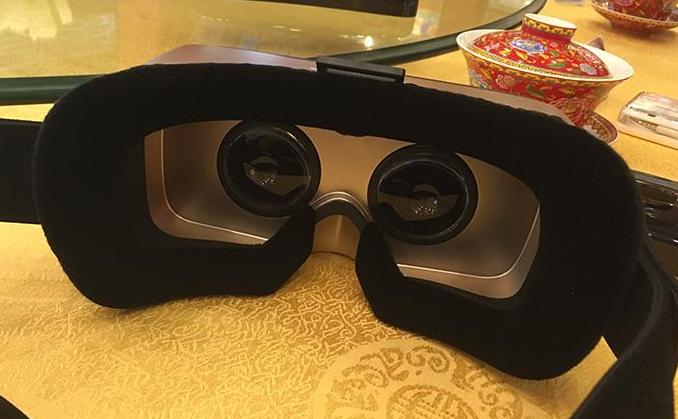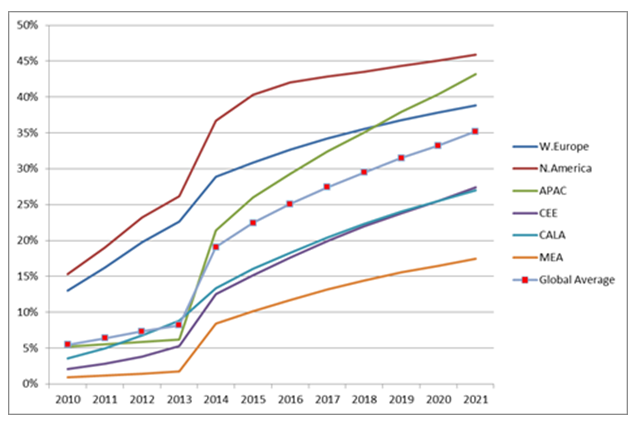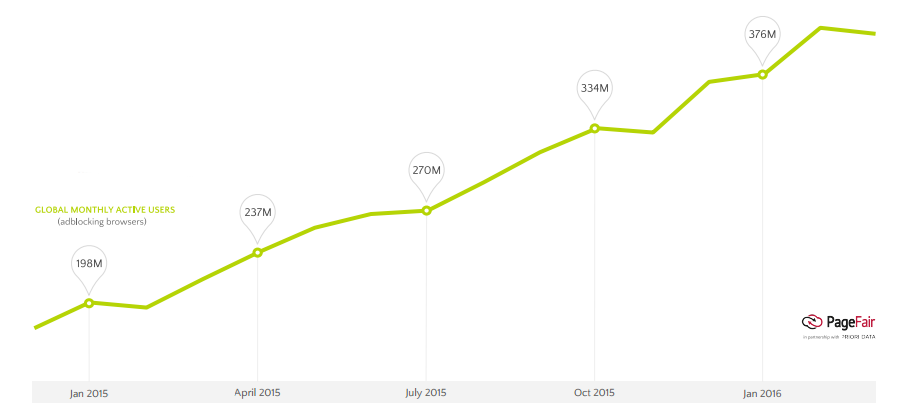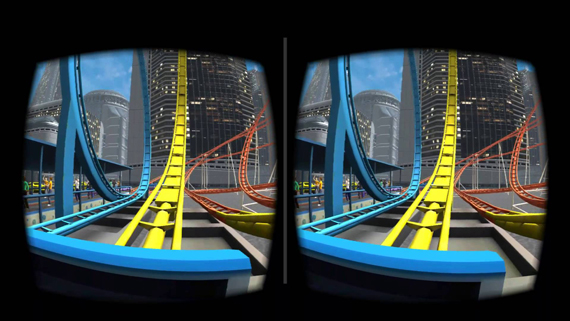Internet advertising trends: from video to virtual reality

Image from ixbt.com
The most courageous experts in the field of Internet marketing are predicting a quick death for banners: they are supposed to be supplanted by video advertising. One of the arguments that they cite, paraphrasing a well-known statement, may sound like this: “It’s better to see once than read a hundred times.”
Many products really look good on the video. If we talk, for example, about applications, then in a short time you will be shown all its best qualities. Well, with the disadvantages can be found after the purchase, or by reading the reviews.
')
Of course, the video in most cases will help the potential client to make an informed decision and click the "Install" button, or cancel the purchase.
In one of the posts on Geektimes it was already told about possible options for promoting applications using video advertising: video on the Google Play Store, video on the App Store (App Previews), alternative App Stores, video on a personal website, YouTube, Facebook Video ads, Instagram video ads, twitter video ads, TrueView (Google video ads).
The popularity of video advertising is growing rapidly, but the popularity of more modern technologies is growing even faster. But about them - a little later.
Forecasts

According to the forecast of Strategy Analytics, by the end of 2022 the number of mobile video audience will increase to 2 billion people.
In an attempt to "conquer the world", advertisers will invest even more in mobile video advertising, trying to reach as many smartphone and tablet users as possible.
Wei Shi, an analyst at Strategy Analytics, notes that the largest revenue growth is expected in the segment of brand-sponsored content. Budgets in this segment will grow by 28% per year over the next 5 years.
By 2021, global revenues in the mobile video sector will reach $ 25 billion (22.5 billion euros).
As can be seen from the graph, North America and Western Europe stand out by the growth rate of mobile video industry revenue. In the Asia-Pacific region, growth dynamics are more intense.
Intermediaries in the process of advertising monetization are increasingly Facebook, Twitter, WeChat and other social networks.
Scientists, however, note that while the trend is developing so quickly that not all advertisers will be able to timely increase their budgets for promotion. But, as we will see later, in the near future other methods of promotion will also gain popularity, which will allow advertisers who have not yet done so to part with their money.
Nuances
It turns out that the visual range for users is incomparably more important than sound. At least, this conclusion is made by researchers.
Facebook daily generates more than 8 billion views. According to the sites LittleThings and Mic, each of which generates 150 million views on Facebook, for 30-second videos 85% of views occur without sound. Representatives of PopSugar similarly confirm this information, specifying that in their case this value is in the range of 50-80%.
The creators of video advertising have found a way out here too: just in case they also place the ad text on the video. They believe that users turn off the sound "for a good reason", and not because the advertisement is in their way.
Representatives of advertising agencies say that at the price of YouTube views is cheaper than Facebook in 9 out of 10 cases. However, sometimes advertisers prefer Facebook because of the presence of a targeted audience. They believe that it will be easier to sell such users services or goods through their channels.
But not everything is as good as advertisers would like to see.

The number of owners of smartphones using ad blocking software has increased by 90% over the last year, according to a recent report by PageFair. In total, advertising on smartphones blocks almost 420 million users worldwide. According to statistics - this is every fifth mobile device on the planet.
Residents of the Asia-Pacific region are actively blocking advertising - blockers are installed on 36% of devices there. In India and Indonesia, adblock applications use two thirds of all smartphone owners. In China, blockers are installed on 159 million devices.
Periscope and Facebook Live
Another trend that cannot be ignored is services using Periscope, Facebook Live and so on. They allow for online broadcasting. They quickly became popular among media companies and celebrities, which means they are of interest to advertisers.
“The popularity can be explained by several trends, but the main thing is the penetration of smartphones and high-speed mobile Internet, which was not five or six years ago. Livestreaming occupies a niche in communications, closing those segments that photos were not available before, ” said Karen Ghazaryan, chief analyst at the Russian Association of Electronic Communications, in an interview with Gazeta.Ru.
Twitter microblogging service bought Periscope in 2015. After that, to conduct online broadcasts, the user has enough of his smartphone connected to the Internet, and a Twitter account.
The new trend was quickly picked up by the social network Facebook, which introduced Facebook Live in August last year. Russian VKontakte and Odnoklassniki services also try to keep up.
The Periscope service was adopted by the media: broadcasts from various events were organized by CNN, Bild, The Guardian, The Verge and others. But while Twitter does not have a clear understanding of how to make money on a new service.
The Facebook network also makes a bet on media content, which ensures the priority position of the video on user pages and sends notifications to subscribed users about the start of the broadcast on a particular page.
To date, social networks have launched live streaming video as a mechanism for increasing the number of users and the time they spend on social networks.
According to Syndacast, video provides the highest conversion rate compared to other types of content. Internet Retailer survey results show that 96% of users are guided by viewing commercials before making a purchase decision.
While in large Internet companies are only thinking about acceptable forms of monetization, marketers have already found ways to promote and make money based on new social network features.
This is helped by the statistics that Facebook Live and Periscope provide at the end of the broadcasts. In particular, the presence of this function was the key moment in the confrontation with Meerkat, which was launched earlier than its competitors, but could not provide a full-fledged feedback on the results of live broadcasts. Negative impact on the application and disconnection from Twitter.
The most obvious way of making money offered in RuNet is advertising an product directly in Periscope itself. This will require an already promoted account in social networks with a considerable audience.
It is proposed to make a profit on conducting lectures or business trainings in case the user has knowledge that is interesting to the public. In this case, you will also need an already popular profile in social networks. In addition, it must be closed, and subscribed to it - paid.
VR technology
VR technology and 360-degree videos have become a major technology trend this year. Users are ready to play specific computer games, take 3D selfies for online shopping, go on virtual dates, but the use of these technologies is not limited to this.
The use of VR for advertising purposes has shifted advertising to another plane - literally and figuratively. And at the same time, the idea of consumer advertising turned upside down.
Analysts argue that the effectiveness of this format is already significantly superior to conventional videos. And this means that the traditional consumption of advertising video content on the Internet (and ordinary video) will eventually give way to virtual reality.
It was the purchase of Oculus by Facebook in 2014 that became the main indicator of the growth of the VR market. Facebook is also developing touch controllers that should complement existing VR technologies that are planned to be used in a virtual reality helmet. Facebook CEO Zuckerberg described the development as "a completely new level of immersion."
In March 2015, the largest video hosting Youtube introduced support for 360-degree video, which will allow you to view videos from different angles. Subsequently, the Zuckerberg company launched a similar function in its social network.
For marketing purposes, the creators of entertainment content — movies and television shows — were the first to use the technology for marketing purposes. 360-degree videos as promo blockbusters began to be massively created immediately after the success of the promotional video of the new “Star Wars”, which was posted on Facebook and Youtube last September.
To date, this has become very common among producers of entertainment content. For example, the HBO channel announced the start of the new season of the most popular TV series “Game of Thrones” using a 360-degree screen saver.
Further, traditional brands became interested in VR technologies: in this format, a new IKEA catalog was released, and the air carrier Etihad Airways made a promotional film in which Hollywood star Nicole Kidman appeared. The Reimagine video, created by The Barbarian Group, allows viewers to immerse themselves in the unique atmosphere of traveling aboard the Airbus A380.
VR advertising technology is ideal for travel business.
The Teleporter, a booth similar to traditional British telephone booths, carried the inhabitants of foggy Albion to the warm shores of the Hawaiian islands or to the bustling New York. The imitation was created with the help of glasses Oculus Rift, a thermal sensor that warmed the air and a fan that simulates the wind.

VR is actively used for promotional purposes for less than a year, but analysts have already calculated the effect of its use for brands. Analytical company Newswhip found that the popularity of posts in social networks today provides video content. Among this content, the most popular are 360-degree videos.
NewsWhip analyzed Facebook data in Facebook of 10 leading publishers over the past year. This group includes new media - such as BuzzFeed and Huffington Post, as well as more traditional ones - The New York Times, Fox News, BBC, Guardian and so on. According to the researchers, 360-degree videos are viewed 55% more than usual, and they are 57% more common.
Today, VR and 360-degree videos only enter the practice of marketers, but analysts say that the development of this segment will inevitably lead to the replacement of conventional videos and a complete change in the consumption model of video content on the Internet.
Source: https://habr.com/ru/post/305760/
All Articles